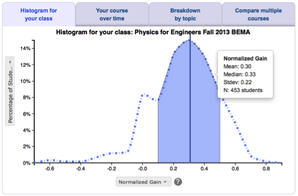
Developed by: Center for Astronomy Education








middle schoolhigh schoolintro collegeinter-mediateupper levelgrad school other

calc based

alg based

conceptual




Overview
What? Engage students in lecture classes by asking cognitively engaging multiple-choice questions to challenge their thinking and foster deep discussion. Students vote with colored cards, try to convince their neighbors, and vote again. Resources help instructors make this method as effective as possible.
Why? Question sets are carefully crafted to go well beyond formative assessment by requiring students to extract information and integrate multiple representations. Easy to set up; very little is required except a projector and paper.
Why not? CAE Lecture Tutorials lack answer keys or suggested supplementary materials for finding correct answers. Implementation requires direct oversight by experienced teachers or those who have completed CAE workshops.
Student skills developed
- Conceptual understanding
- Using multiple representations
- Problem-solving skills
- Making real-world connections
Instructor effort required
- Low
Resources
Think-Pair-Share How-To Guide by G. Brissenden & E. Prather
SERC Think-Pair-Share Tips and Techniques
A-B-C-D Voting Card (pdf)
Teaching Materials
You can download many Astronomy Think-Pair-Share questions for free from the Center for Astronomy Education or from the ClassAction Questions List of over 500 questions.
See our Expert Recommendation on finding good questions to use with clickers or Peer Instruction for an extensive list of databases of think/pair/share questions, as well as suggestions for writing your own questions.
Research
This is the third highest level of research validation, corresponding to:
- at least 1 of the "based on" categories
- at least 1 of the "demonstrated to improve" categories
- at least 1 of the "studied using" categories
Research Validation Summary
Based on Research Into:
- theories of how students learn
- student ideas about specific topics
Demonstrated to Improve:
- conceptual understanding
- problem-solving skills
- lab skills
- beliefs and attitudes
- attendance
- retention of students
- success of underrepresented groups
- performance in subsequent classes
Studied using:
- cycle of research and redevelopment
- student interviews
- classroom observations
- analysis of written work
- research at multiple institutions
- research by multiple groups
- peer-reviewed publication
References
- R. French and E. Prather, Uncovering the unknown unknowns of Peer Instruction Questions, presented at the Physics Education Research Conference 2018, Washington, DC, 2018.
- R. French and E. Prather, From a systematic investigation of faculty-produced Think-Pair-Share questions to frameworks for characterizing and developing fluency-inspiring activities, Phys. Rev. Phys. Educ. Res. 16 (2), 020138 (2020).
- E. Prather and G. Brissenden, Development and Application of a Situated Apprenticeship Approach to Professional Development of Astronomy Instructors, Astron. Educ. Rev. 7 (2), 1 (2008).
- E. Prather, A. Rudolph, G. Brissenden, and W. Schlingman, A national study assessing the teaching and learning of introductory astronomy. Part I. The effect of interactive instruction, Am. J. Phys. 77 (4), 320 (2009).
- A. Rudolph, E. Prather, G. Brissenden, D. Consiglio, and V. Gonzaga, A National Study Assessing the Teaching and Learning of Introductory Astronomy Part II: The Connection between Student Demographics and Learning, Astron. Educ. Rev. 9 (1), (2010).





